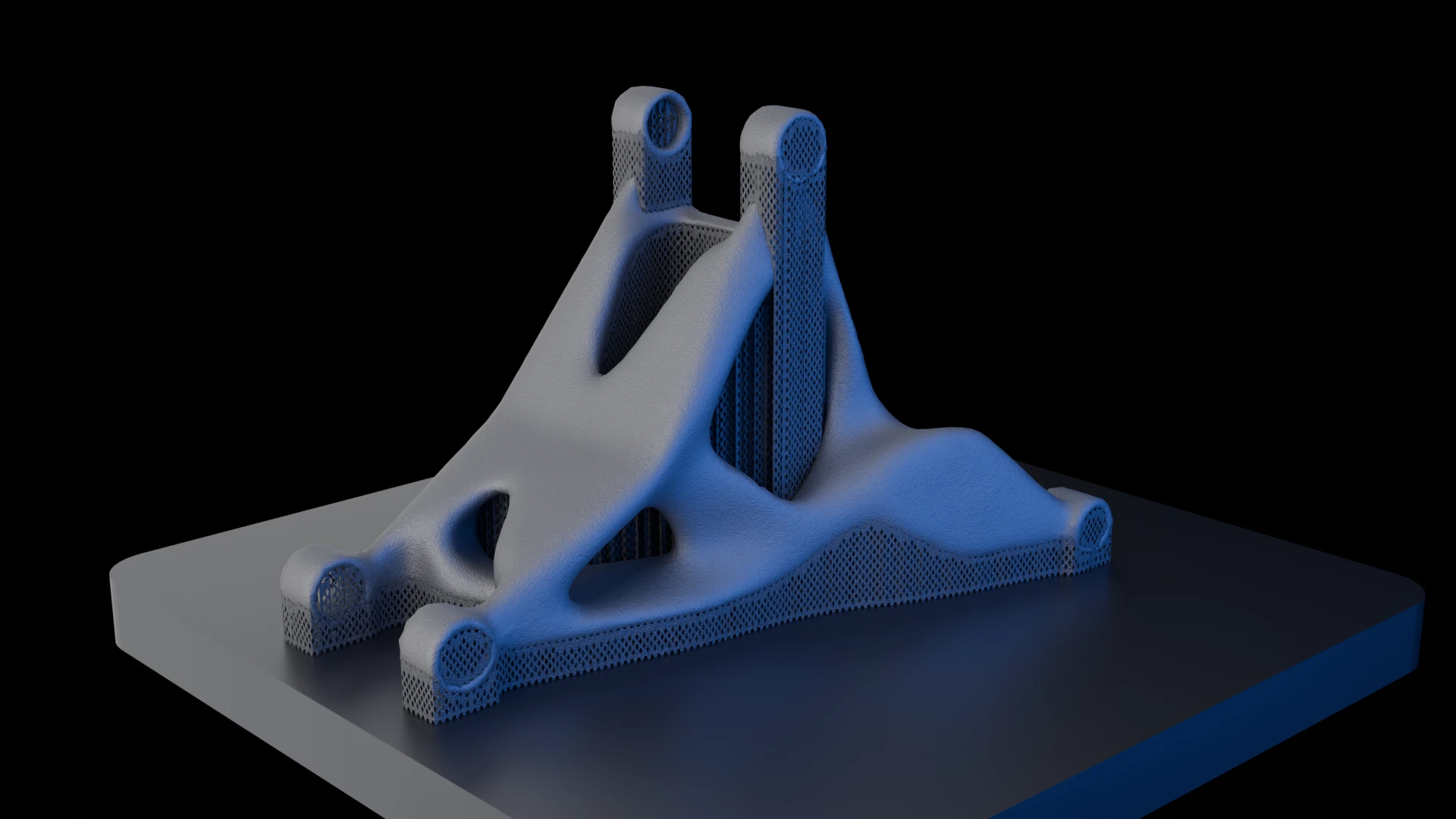In today’s fast-paced world, every technology that brings flexibility, innovation, and cost efficiency gains value. With the rapid evolution of 3D printing, long-established methods like generative design and topology optimization are resurfacing in new ways, combining to push the boundaries of innovation even further.

One of the biggest advantages of 3D printing is that no tooling is required – the complexity of a part is limited only by the designer’s imagination. Many still believe that 3D printing is more expensive than injection molding or CNC machining, and in some cases that’s true.
However, additive manufacturing delivers real value when a part is designed for this technology from the very beginning of development. Unlike traditional processes, the cost of 3D printing doesn’t rise steeply with complexity. This makes it possible to merge multiple components into a single part, integrate internal cooling or heating channels, print advanced superalloys, and use lattice structures for further localized weight reduction.
The idea behind topology optimization is to refine a design under given loads and constraints, targeting parameters such as minimal weight, maximum stiffness, or uniform stress distribution. The result is an optimized, complex, and often organic-looking shape that fits perfectly with additive manufacturing. It’s not uncommon for a part to end up around 40% lighter than the initial design.
Generative design is a similar method to topology optimization, but the outcome is a design space consisting of multiple variations. Each model meets the defined boundary conditions, and the engineer selects the final shape based on factors such as weight, cost, and manufacturability. This approach is particularly useful when no initial geometry is available and complex components need to be developed from scratch in a short time. When combined with additive manufacturing, it is gaining increasing importance in aerospace, motorsport, and automotive applications.
Lattice structures are repeating geometric patterns within a volume that can significantly reduce a part’s weight without compromising stiffness or strength. This technique allows for local lightening of critical areas, optimizes the load-bearing capacity of the overall structure, and opens up new possibilities for producing complex, lightweight yet strong components. Additive manufacturing is particularly well-suited for creating lattice structures, as they are often impossible to achieve with traditional methods.
At our company, it has become standard practice to use 3D-printed master patterns or molds for the production of carbon fiber components. This approach not only significantly reduces manufacturing costs but also shortens production lead times. We introduced this method to make one-off parts and small-series production economically viable — without compromising on quality or performance.
Joints of composite parts often presents a challenge, as joints can become potential failure points over the product’s lifetime. For this reason, the integration of metals with composites is essential. We have always found it disheartening to pair a feather-light carbon fiber component with a heavy, CNC-machined aluminum fitting — which is why we believe in lightweight, 3D-printed metal structures that seamlessly fuse with composite elements.